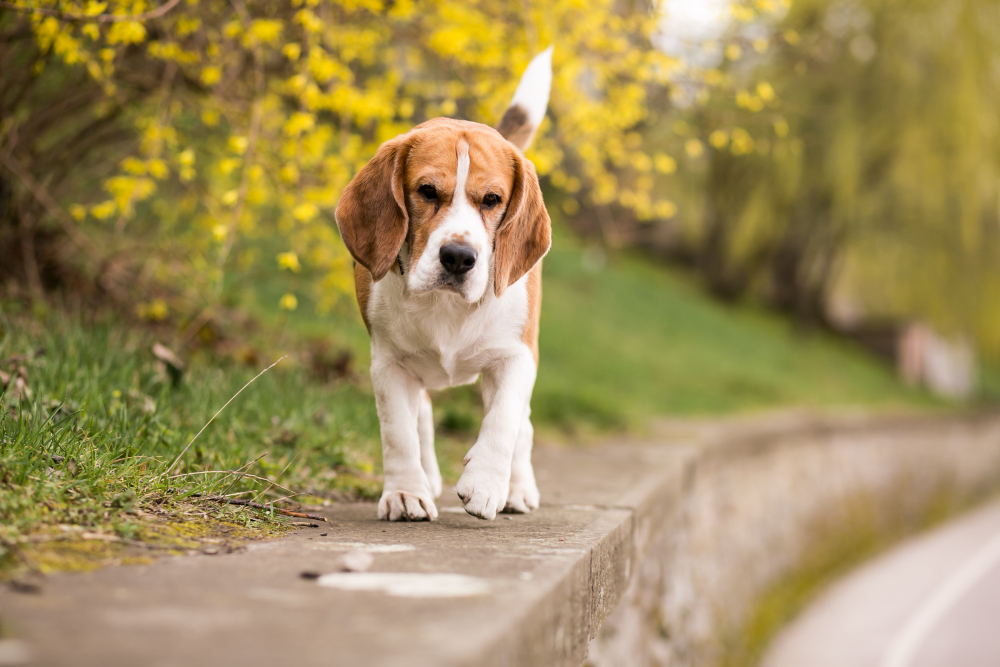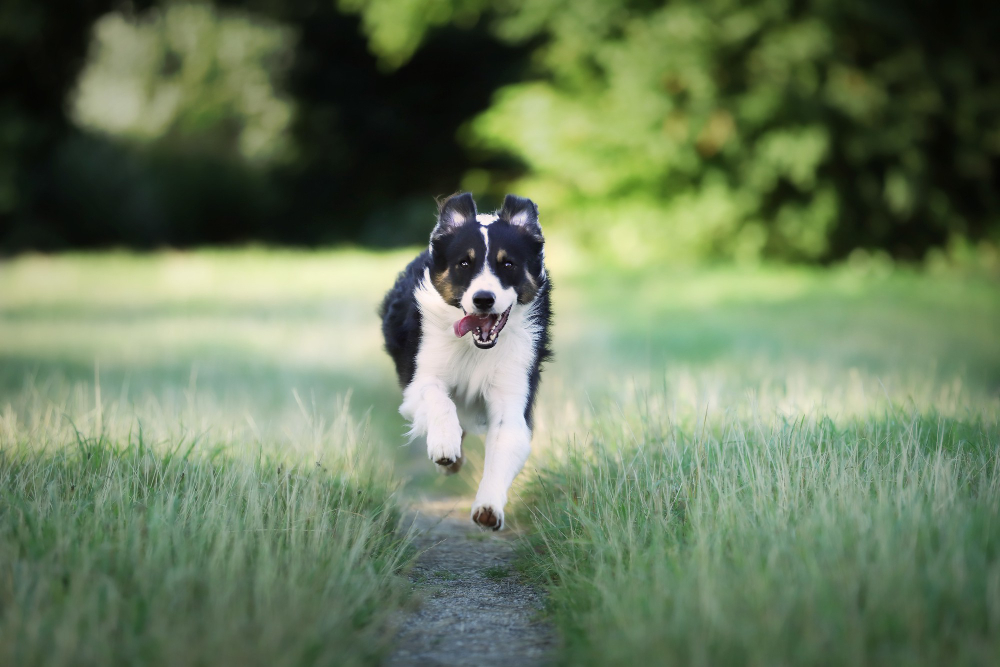Wonder why your dog loves running and pawing at toys or you? “Prey drive” refers to a dog’s instincts to hunt down, chase, catch, and kill. All breeds have some level of prey instinct. However, it’s much stronger in dogs bred solely for their hunting abilities, like Terriers.
Pet parents should understand their dog’s prey-drive behaviors to help them live happy and fulfilled lives. Once you know your dog’s needs, Jeanette Muldoon, a dog trainer at Easy Peasy Puppy Training, says you can pick the right trainer and activities to satisfy them.
Let’s look at the tell-tale signs of prey-drive instincts and approaches that can help keep behaviors in check.
What Are the Signs of a High Prey Drive in Dogs?
If you’re wondering if your dog has a higher prey drive, there are a few things they might do, including:
- Quietly watching something
- Slow and steady movements
- Low-positioned head and body
However, prey drive isn’t always obvious, says Joe Nutkins, a Kennel Club-accredited dog trainer and canine behaviorist. “Dogs that are good at their skills will have subtle ways of practicing,” she says.
Additionally, Nutkins explains that prey instincts can come into action at home or outside. Sometimes, you might see your dog watching birds or squirrels at the dog park then chasing them away. Other times, if animals are on TV, your dog might watch the screen closely and slowly move towards it.
Rare;y, behaviors associated with high prey drive can pose risks to people. Your dog might pull on their leash and knock you over if they decide to chase or bite your hand if you get in the way of their prey.
What Breeds Have a High Prey Drive?
Dog breeds known to have higher prey drives are:
- Jack Russell Terrier
- Pitbull Terrier
- Border Collie
- Beagle
- Greyhound
- Weimaraner
- Saluki
- Coonhound
- Mountain Cur
- Airedale Terrier
- Lurcher
- German Shepherd
- Rhodesian Ridgeback
How to Safely Interact With a High Prey Drive Dog
Remember, a high prey drive doesn’t automatically make a dog aggressive. Muldoon explains that aggression is an emotion, not a genetic factor. “For owners that have a high prey drive dog, it’s important to work with a professional,” she continues.
If your dog has a high prey drive and is known to suddenly give chase or pounce, here’s how you can keep yourself and other pets safe.
- Use long leads and harnesses: Muldoon says it’s important to keep your dog on a long lead or harness when out for walks.
- Prioritize training: Teach your dog basic behaviors, such as recall and checking in.
- Have activities on hand: Knowing what you can do to engage your dog and distract them when necessary can be beneficial.
- Watch for tiredness: You might think a tired dog will have less energy to chase and hunt, but Muldoon says this isn’t always true. In fact, when dogs are tired, their instincts are likelier to kick in.

How Can You Redirect Your Dog’s High Prey Drive?
Since our pet dogs rarely run around and chase animals, it’s important to offer other outlets for them to safely engage their prey drive. Luckily, there are many ways you can redirect and manage prey behaviors, including:
1. Training
Nutkins says training helps pups frustrated by their high prey drive by offering more freedom. However, giving them the wrong training exercises can make it worse.
Working with a professional who uses positive, fear-free training is also essential. Nutkins explains this approach helps dogs thrive and prevents natural behaviors from being suppressed, which can later resurface as a different concern.
2. Exercise
As with humans, Nutkins says exercise gives dogs with a high prey drive an ideal outlet for releasing energy.
Exercise doesn’t have to be complex. Beneficial activities range from walks and runs to agility tasks or Flyball.
3. Interactive toys
Toys such as feeding puzzles and mazes are a fantastic way to engage the minds of dogs with a high prey drive.
However, Nutkins explains that a single toy isn’t enough to satisfy prey instincts; these tools are best combined with other training or activities.
4. Structured activities
Certain activities can help shift a dog’s attention from thoughts of chasing and catching bunnies. Nutkins suggests Trieball and agility courses to let your dog herd and chase.
However, consistency is key; engaging in an activity once a month is likely to have little effect. Instead, Nutkins says, practicing a few times a week can really help channel the energy and drive into the activity and less on hunting and chasing.
Common FAQs About Dog Prey Drive
Want to know a bit more about dogs’ high prey drive? We asked the experts to answer some of the most commonly asked questions on the topic.
What is the difference between prey drive and play drive?
Specific behaviors can help you tell if your dog is preying or playing. Nutkins says prey drive movements are more planned and precise.
Meanwhile, play-drive dogs are more relaxed, bouncy, and boisterous. They’ll also ask for pets and be more welcoming with their body language.

Can prey drive be reduced or eliminated?
You can’t “fix” or get rid of a dog’s prey drive instincts. However, you can engage in training to help manage certain behaviors and redirect them in a more positive, people-friendly way.
Is prey drive a sign of a bad dog?
Definitely not! “Dogs with prey drive are regarded as highly intelligent,” Nutkins states. It all comes down to giving them the correct ways to release excess energy and practice their natural instincts.
How do I know if my dog’s prey drive is too high?
For dogs, there’s no such thing as “too high” of a prey drive. It’s only humans (or other animals) who might perceive behaviors as being a lot to handle. Muldoon suggests looking at factors that could be contributing to excessive preying behaviors.
Can a dog with high prey drive live with cats?
Potentially. However, Nutkins says there might be a constant risk of a cat being chased, caught, and injured. Have separate areas for the cat to move around, baby gates and cat trees.
Overall, she usually advises against pet parents getting a cat if they have a high prey drive dog.
